- Home
- Paul Christopher
The Templar Throne
The Templar Throne Read online
Table of Contents
Title Page
Copyright Page
Chapter 1
Chapter 2
Chapter 3
Chapter 4
Chapter 5
Chapter 6
Chapter 7
Chapter 8
Chapter 9
Chapter 10
Chapter 11
Chapter 12
Chapter 13
Chapter 14
Chapter 15
Chapter 16
Chapter 17
Chapter 18
Chapter 19
Chapter 20
Chapter 21
Chapter 22
Chapter 23
Chapter 24
Chapter 25
Chapter 26
Chapter 27
Chapter 28
Chapter 29
Chapter 30
Chapter 31
Chapter 32
Chapter 33
Teaser chapter
DEAD AT SEA
“Oh crap,” groaned Holliday, the hairs on the back of his neck rising, giving him a split-second advantage as the flimsy cabin door burst outward and Antonin Pesek hurtled through the opening, a dark, flat automatic already raised in his hand.
Instinctively, Holliday threw the wheel hard over and the flat-bottomed boat slewed drunkenly to port, throwing the assassin off balance, the pistol flying out of his hand as he fought to stay on his feet. The weapon spun across the deck, lost in the clutter of equipment around the transom.
The killer barely paused, a broad-bladed knife appearing almost magically in his right hand. Pesek lunged and Holliday backed against the gunwale as the lethal instrument slashed across his belly. . . .
Also by Paul Christopher
Michelangelo’s Notebook
The Lucifer Gospel
Rembrandt’s Ghost
The Aztec Heresy
The Sword of the Templars
The Templar Cross
SIGNET
Published by New American Library, a division of
Penguin Group (USA) Inc., 375 Hudson Street,
New York, New York 10014, USA
Penguin Group (Canada), 90 Eglinton Avenue East, Suite 700, Toronto,
Ontario M4P 2Y3, Canada (a division of Pearson Penguin Canada Inc.)
Penguin Books Ltd., 80 Strand, London WC2R 0RL, England
Penguin Ireland, 25 St. Stephen’s Green, Dublin 2,
Ireland (a division of Penguin Books Ltd.)
Penguin Group (Australia), 250 Camberwell Road, Camberwell, Victoria 3124,
Australia (a division of Pearson Australia Group Pty. Ltd.)
Penguin Books India Pvt. Ltd., 11 Community Centre, Panchsheel Park,
New Delhi - 110 017, India
Penguin Group (NZ), 67 Apollo Drive, Rosedale, North Shore 0632,
New Zealand (a division of Pearson New Zealand Ltd.)
Penguin Books (South Africa) (Pty.) Ltd., 24 Sturdee Avenue,
Rosebank, Johannesburg 2196, South Africa
Penguin Books Ltd., Registered Offices:
80 Strand, London WC2R 0RL, England
First published by Signet, an imprint of New American Library,
a division of Penguin Group (USA) Inc.
First Printing, June 2010
Copyright © Paul Christopher, 2010 All rights reserved
REGISTERED TRADEMARK—MARCA REGISTRADA
Without limiting the rights under copyright reserved above, no part of this publication may be reproduced, stored in or introduced into a retrieval system, or transmitted, in any form, or by any means (electronic, mechanical, photocopying, recording, or otherwise), without the prior written permission of both the copyright owner and the above publisher of this book.
PUBLISHER’S NOTE
This is a work of fiction. Names, characters, places, and incidents either are the product of the author’s imagination or are used fictitiously, and any resemblance to actual persons, living or dead, business establishments, events, or locales is entirely coincidental.
The publisher does not have any control over and does not assume any responsibility for author or third-party Web sites or their content.
eISBN : 978-1-101-19801-8
The scanning, uploading, and distribution of this book via the Internet or via any other means without the permission of the publisher is illegal and punishable by law. Please purchase only authorized electronic editions, and do not participate in or encourage electronic piracy of copyrighted materials. Your support of the author’s rights is appreciated.
http://us.penguingroup.com
The very word “secrecy” is repugnant in a free and open society; and we are as a people inherently and historically opposed to secret societies, to secret oaths, and to secret proceedings.
—John F. Kennedy
The Assyrian came down like the wolf on the fold,
And his cohorts were gleaming in purple and gold;
And the sheen of their spears was like stars on the sea,
When the blue wave rolls nightly on deep Galilee.
—Lord Byron, “The Destruction of Sennacherib”
1
Colonel John “Doc” Holliday, U.S. Army Rangers (retired), most recently a professor of medieval military history at the United States Military Academy at West Point (retired from that, too), sat on the glassed- in terrace of La Brasserie Malakoff, an upscale café in the prestigious sixteenth arrondissement of Paris. His companion was Maurice Bernheim, director of the Musée National de la Marine, the National Maritime Museum of France.
Both men were eating a lunch of salad and croque monsieur, the Parisian version of a Reuben sandwich that might as well have come from an entirely different universe. The Parisians looked down their noses at everyone else on the planet, but when it came to food they were right. Even a Royale avec Fromage at a Paris McDonald’s was vastly superior to a Big Mac sold anywhere else in the world. Bernheim had been lecturing him on the subject for the better part of an hour, but a good lunch on a spring day in Paris made up for a lot of things.
Holliday had crossed paths with Bernheim previously when he was in the midst of tracking down the secret of the Templar sword. The chubby little historian who smoked the foul-smelling cigarettes called Boyards had helped him then and Holliday was hoping he’d help him again.
“I must say it is too bad that your charming niece could not be with you today,” said Bernheim. He finished the sandwich and hailed a waiter, ordering crème caramel and coffee for both of them.
“Cousin,” corrected Holliday. “She’s too busy being pregnant in Jerusalem.” Peggy and the Israeli archaeologist Rafi Wanounou had married last year shortly after their adventures in the Libyan desert, the same adventures that had eventually led Holliday to his high-cholesterol lunch with Maurice Bernheim.
“Such a pretty young woman,” sighed the middle-aged man.
“Her new husband thinks so.” Holliday smiled. “Speaking of which, how’s your wife and kids?”
“Pauline is well, thank you. Fortunately for me her dental practice keeps me in the style to which my little hellions and I have grown accustomed. The twins of course must also have the latest running shoes. La vie est tres cher, mon ami. Life is very expensive, yes? Soon it will be makeup and matching Mercedeses.” Bernheim flicked an invisible bit of fluff off the lapel of his very expensive Brioni suit.
The crème caramel arrived and the museum director stared at it reverently for a moment, as though it was a great work of art, which, to Bernheim, it probably was. Holliday ignored the dessert and tried the coffee. As with everything else at Malakoff’s, it was excellent. At least with the ban on smoking in Paris restaurants he didn’t have to endure Ber
nheim’s Boyards.
“So,” said the nautical expert. “What brings you to Paris and my humble little museum?” He took another bite of the crème caramel and briefly closed his eyes to savor the flavor.
“Have you ever heard of a place called La Couvertoirade?” Holliday asked.
Bernheim nodded. “A fortified town in the Dordogne. Built by the Templars, I believe.”
“That’s right,” Holliday said and nodded. “A while back an archaeologist, a monk named Brother CharlesÉtienne Brasseur, discovered a cache of documents from there relating to the Templar expedition to Egypt.” Holliday paused, trying to remember it all. “The texts were written by a Cistercian monk named Roland de Hainaut. Hainaut was secretary to Guillaume de Sonnac, the grand master who led the Templars at the Siege of Damietta in 1249.”
“Of course. The Seventh Crusade,” said Bernheim. “They couldn’t get upriver because of the Nile flooding so they sat around for six months and had their way with the Egyptian women.”
“They also played at being tourists,” added Holliday. “Guillaume de Sonnac’s personal ship as grand master was a caravel called the Sanctus Johannes chartered out of Genoa from a ship owner named Peter Rubeus. De Sonnac provided his own captain, a fellow Frenchman named Jean de Saint-Clair.”
“A common enough name in France, I’m afraid,” said Bernheim. “Rather like John Smith in America.” He smiled. “A name used to sign hotel registers with.”
“Well, while this particular Saint-Clair was in Damietta he traveled a little way to Rosetta, where the famous stone was found a few hundred years later by Napoleon’s archaeologists.”
“And stolen by the British, I might add,” snorted Bernheim.
“Take it up with the queen,” said Holliday. “Anyway, while Saint-Clair was on his little visit to Rosetta along with de Sonnac’s secretary, they stumbled on some old Coptic documents in a monastery there. The documents described something they referred to as an Organum Sanctum.”
“An Instrument of God,” translated Bernheim. “It generally refers to a person. Moses was an instrument of God, for instance.”
“Not this time,” said Holliday. He opened the floppy old-fashioned briefcase on his lap and took out two ten-inch-long strips of wood. One of the strips was slightly thicker than the other and had a square hole halfway down its length. The narrower of the two pieces was clearly meant to fit into the hole, forming a cross. Both strips were notched at regular intervals.
“A Jacob’s Staff,” Bernheim said and nodded. “A sixteenth-century navigational instrument.”
“Except the documents were discovered by Saint-Clair and de Sonnac’s secretary two hundred years before that,” said Holliday. “Stranger still, the documents described the device from which that model was made as being even older—from the time of the pharaohs, in fact.”
“Ridiculous,” scoffed Bernheim.
“I found the original of the device you hold in your hand in the mummified hand of the pharaoh Djoser’s vizier. The mummy was entombed at least twenty-five hundred years before the birth of Christ and four thousand years before Jean de Saint-Clair was in Rosetta. The original is now in the safekeeping of the Metropolitan Museum of Art in New York. The copy you’re holding is an exact duplicate made by their model department.”
“There can be no mistake about the age?”
“Spectroscopic analysis is accurate within a margin of error less than ten percent for African juniper. There’s no doubt about it, Maurice: the instrument is forty-five hundred years old.”
“Merde,” breathed the man, his crème caramel forgotten. “You know what this does to the basic paradigm of modern nautical history?”
“Destroys it,” answered Holliday flatly.
“This device would be as much a secret weapon as the atomic bomb,” said Bernheim. “A seafaring nation that had it would have an incredible advantage over a nation that lacked it.”
“At least for the two hundred years or so between Saint-Clair’s discovery and the Jacob’s Quadrant being invented in the fifteen hundreds,” said Holliday.
“Columbus goes out the window.”
“And it almost certainly means that those fairy tales about the Templars going to America are true. Or could be,” said Holliday.
“Saint-Clair, Sinclair,” mused Bernheim. He ran his thumb along the notches along the sides of the two strips of wood, then fitted the two pieces together. He held up the cruciform instrument. “Have you ever seen the ancient coat of arms of the Saint-Clairs?” Bernheim asked. “The original, as it was used in France?”
“Sure,” answered Holliday. “A scalloped cross.”
“Pas escallope, mon ami. In France it is called La Croix Engraal,” said Bernheim. “An ‘engrailed’ cross.”
“Which means?” Holliday asked.
“In heraldic terms engraal means ‘protected by the Holy Grail,’ the Grail being indicated by what, in that silly Da Vinci book, was referred to as the V of the sacred feminine, not sangraal, the blood of Christ. But what if, on the Saint-Clair crest, the engraal notches on the cross referred to something else? Something much more practical.” Bernheim ran his thumbnail along the notches in the wood. Holliday suddenly understood.
“The gradation indentations on a Jacob’s Quadrant,” Holliday said and grinned. “The simplest explanation is most often the truth. Occam’s razor.”
“C’est ca,” said Bernheim happily. “The mystery is solved.”
“Not until I find out more about this Jean de Saint-Clair, whoever he was.”
Bernheim had gone back to his crème caramel. He put down his spoon and wiped his lips with a napkin. He shrugged.
“Historically the Sinclairs of Scotland came from a little place known as Saint-Clair-sur-Epte. The Epte River once served as the border between Normandy and Ile de France; that is, between the English possessions and the rest of the country. It is also the river diverted by Claude Monet to create his famous water- lily pond.”
“What on earth does any of this have to do with maritime history?” Holliday laughed, impressed by Bernheim’s fund of knowledge on such an obscure subject.
“Your interest, your expertise is in medieval warfare, correct?”
“I’d like to think so.”
“Mine is ships and the sea. Before ships there must be wood; before wood there must be trees. Have you ever heard of the Beaulieu River in England?”
“No.”
“Then you’ve never heard of the village of Buckler’s Hard.”
“Not a name I’m familiar with.”
“Anyone involved in French maritime history would be,” said Bernheim. “HMS Euryalus, HMS Swiftsure and HMS Agamemnon were all built there, ships that were key during the Battle of Trafalgar in which the British defeated the French fleet in 1805. It was wood from the surrounding New Forest that built Nelson’s entire fleet.”
“You’re saying the Epte River had the same function?”
“Since the time of the Vikings,” Bernheim said with a nod. He scraped the last of the crème caramel from the sides of his dish. He smacked his lips and sighed. “If the Saint-Clair you seek was a seaman he almost certainly came from Saint-Clair-sur-Epte.” He stared mournfully down at his empty dish and sighed again. “There is an old abbey nearby, the Abbaye de Tiron. Speak with the librarian there, Brother Morvan. Pierre Morvan. Perhaps he will be able to help you.” He glanced over at Holliday’s untouched crème caramel. “Not hungry?” Bernheim inquired hopefully.
2
The average student thinks the best synonym for “research” is “Google.” Real, original research, however, has more to do with pinball than search engines; it’s usually a matter of hit and miss, with a lot more misses than hits. You ricochet around the table gathering points as you go, eventually finding out a direction before eventually reaching your destination.
Discovering the whereabouts of Pierre Morvan turned out to be a long-distance game of pinball, ricocheting northwest for a hundred
miles from Paris to the monastery of the Abbaye de Tiron in the town of Saint-Clair-sur-Epte, then seventy miles south to the tiny village of Le Pin-la-Garenne and its even smaller eleventh-century church, and finally a hundred miles due west to the town of Dol-de-Bretagne near the Brittany coast and the cathedral there.
It was time well spent. Holliday discovered that the Abbaye de Tiron was reputedly the birthplace of Freemasonry, which usually allied with the Templars. The little church in Le Pin- la-Garenne had a lot of Saint- Clairs buried in its crypt, and Dol-de-Bretagne was reputedly the original home of the Stuart kings of Scotland, also closely associated with the Templars, especially after the official dissolution of the order in A.D. 1312. It was also the birthplace of the ancestors of William Sinclair, First Earl of Caithness, Third Earl of Orkney, Baron of Roslin and the builder of Rosslyn Chapel, in Midlothian, the supposed location of the final secret in the book The Da Vinci Code.
The Cathedral of Dol was a grim-looking Gothic structure, black with a thousand years of soot and grime. The original church was built in A.D. 834 and added onto for the next six hundred years. According to legend, St. Samson, in the midst of building the cathedral, infuriated Satan, who threw a gigantic rock at the cathedral, destroying the north tower, which no longer exists. Holliday found Brother Morvan on his hands and knees taking a rubbing of a Latin inscription on the floor of the nave. Morvan was wearing the white habit and black scapular “apron” of a Cistercian, the sect of monks the Templars were most frequently associated with.
Holliday cleared his throat. “Brother Morvan?”
The gray-haired monk glanced up at him and smiled. He was a grandfatherly man, complete with twinkling eyes and old-fashioned rimless spectacles perched on a large hooked nose.
“You must be Mr. Holliday,” said the monk. “Do people ever call you ‘Doc’ like the famous western gunfighter?”

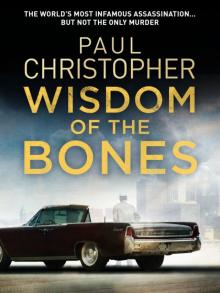 Wisdom of the Bones
Wisdom of the Bones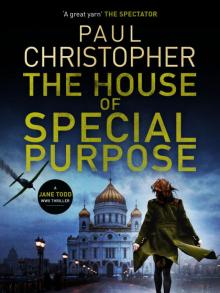 The House of Special Purpose
The House of Special Purpose The Second Assassin
The Second Assassin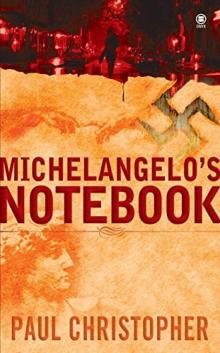 Michelangelo's Notebook
Michelangelo's Notebook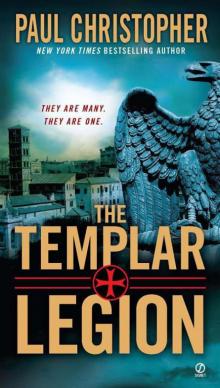 Templar Legion
Templar Legion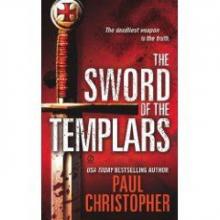 The Sword of the Templars t-1
The Sword of the Templars t-1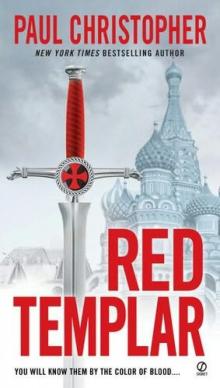 Red Templar
Red Templar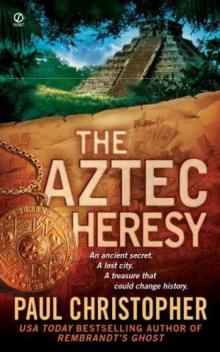 The Aztec Heresy
The Aztec Heresy The Templar Legion
The Templar Legion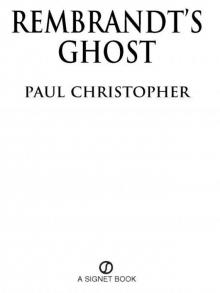 Rembrandt's Ghost
Rembrandt's Ghost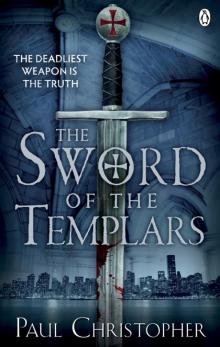 Sword of the Templars
Sword of the Templars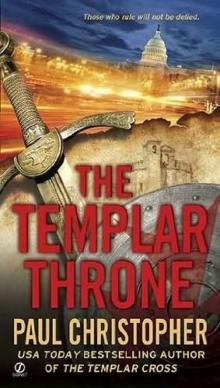 The Templar throne t-3
The Templar throne t-3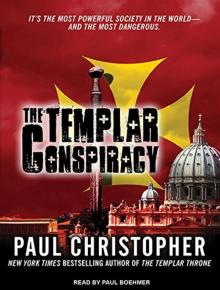 The Templar Conspiracy
The Templar Conspiracy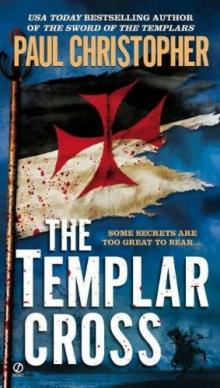 The Templar Cross t-2
The Templar Cross t-2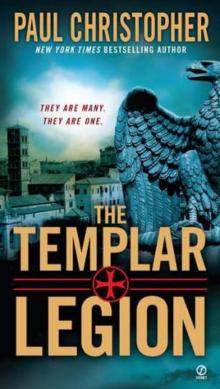 The Templar Legion t-5
The Templar Legion t-5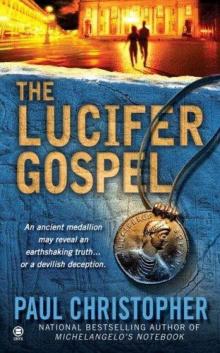 The Lucifer Gospel
The Lucifer Gospel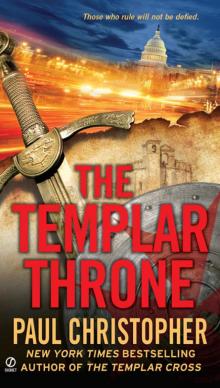 Templar Throne
Templar Throne Michelangelo_s Notebook fr-1
Michelangelo_s Notebook fr-1 The Lucifer Gospel fr-2
The Lucifer Gospel fr-2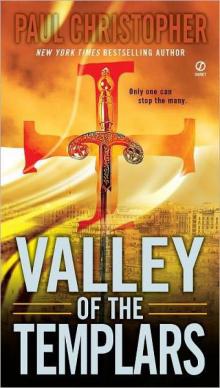 Valley of the Templars ts-7
Valley of the Templars ts-7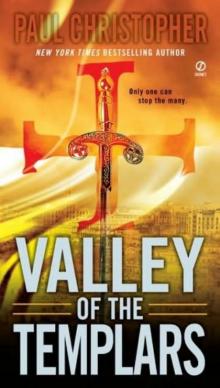 Valley of the Templars
Valley of the Templars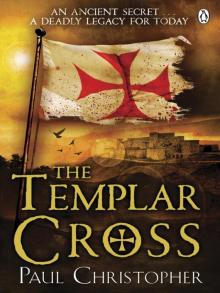 Templar Cross
Templar Cross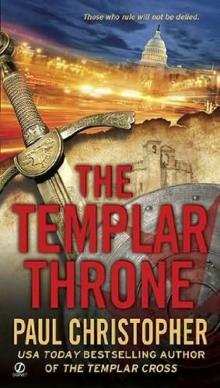 The Templar Throne
The Templar Throne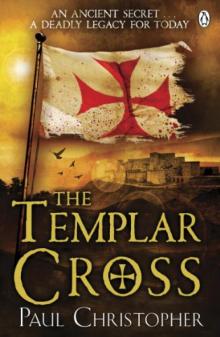 The Templar Cross
The Templar Cross Lost City of the Templars
Lost City of the Templars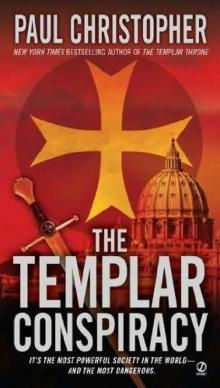 The Templar conspiracy t-4
The Templar conspiracy t-4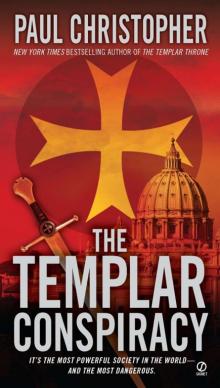 Templar Conspiracy
Templar Conspiracy